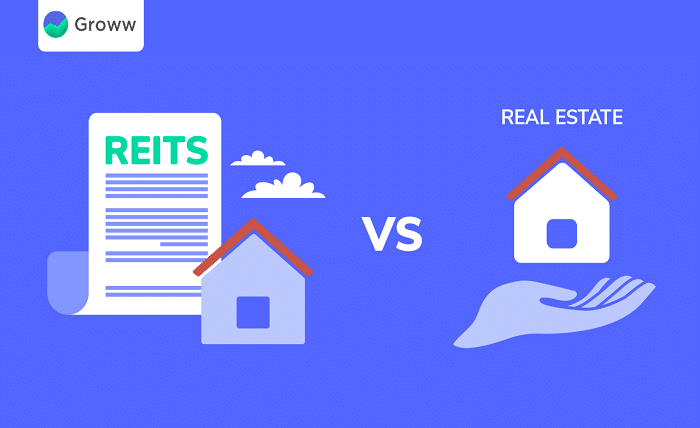A Comprehensive Guide on How to Invest in REITs: Strategies for Beginners

Introduction
Real Estate Investment Trusts (REITs) offer a way for investors to delve into the real estate market without the need to physically buy property. Understanding how to invest in REITs is crucial for anyone looking to diversify their investment portfolio and generate passive income. This blog post provides a detailed walkthrough on how to get started with REITs, covering various types of REITs, key investment strategies, and important considerations before making an investment.
What are REITs?
A REIT is a company that owns, operates, or finances income-generating real estate. By learning how to invest in REITs, investors gain exposure to real estate markets with the added advantage of receiving regular income distributions. REITs are required by law to distribute at least 90% of their taxable income to shareholders annually in the form of dividends, making them an attractive option for income-focused investors.
Types of REITs
Understanding the different types of REITs is a fundamental step in learning how to invest in REITs effectively. There are primarily three types: equity REITs, mortgage REITs, and hybrid REITs. Each type focuses on different segments of the real estate market, and choosing the right type depends on your investment goals and risk tolerance.
Benefits of Investing in REITs
Investing in REITs offers numerous benefits, including high dividend yields, liquidity, and diversification. For those looking at how to invest in REITs, it’s reassuring to know that REITs also offer transparency and are regulated by the SEC, providing a layer of security for investors.
How to Choose the Right REIT
Choosing the right REIT requires understanding your own financial goals and doing thorough research. Key factors to consider when learning how to invest in REITs include the REIT’s track record, management quality, asset types, and dividend yield history. Analyzing these factors can help you select a REIT that aligns with your investment objectives.
REIT Dividends
A major draw for those looking at how to invest in REITs is their dividends. REITs provide a reliable source of income through dividends derived from rental income, property sales, or interest on financing real estate transactions. Understanding how these dividends are calculated and distributed is crucial for any REIT investor.
REITs vs. Direct Real Estate Investment
When considering how to invest in REITs, it’s important to compare them with direct real estate investments. REITs provide easier entry, lower costs, and less management hassle compared to owning property directly. However, they also offer less control over investments and potential for lower returns compared to high-value real estate transactions.
Tax Implications of REIT Investments
Investors exploring how to invest in REITs should also consider the tax implications. The dividends received from REITs are taxed as regular income, which can be higher than capital gains taxes on other types of investments. Understanding these implications can help in planning and optimizing your investment for tax efficiency.
Risks of REIT Investments
Like any investment, understanding the risks involved in how to invest in REITs is vital. Market volatility, interest rate changes, and property value fluctuations can all impact REIT performance. Investors need to be aware of these risks and consider them when building their investment strategy.
How to Start Investing in REITs
For those new to how to invest in REITs, getting started can be straightforward. Investors can buy shares of publicly traded REITs through brokerage accounts. Starting with a small investment can be a wise approach to understand the market dynamics before scaling up the investment.
Future Outlook for REIT Investments
The future of REIT investments looks promising with the growth of e-commerce, residential properties, and healthcare facilities. Staying informed about market trends and economic factors is crucial for anyone learning how to invest in REITs, as these elements can directly influence REIT performance.
Conclusion
Investing in REITs can be a lucrative way to gain exposure to real estate with less capital and without the hassle of managing properties. As you consider how to invest in REITs, remember that thorough research, understanding the types and implications of your investments, and staying updated on market conditions are key to success. Whether you’re looking for income through dividends or diversification in your investment portfolio, REITs offer a compelling option.
FAQs
- What is the minimum investment required to start investing in REITs?
- You can start investing in publicly traded REITs with the purchase of a single share, making it an accessible option for most investors.
- How often do REITs pay dividends?
- Most REITs pay dividends quarterly, although some may pay monthly, enhancing their appeal to income-focused investors.
- Can I invest in REITs through my retirement account?
- Yes, REITs can be a part of retirement accounts like IRAs and 401(k)s, offering a tax-efficient way to invest.
- Are REITs suitable for short-term investments?
- Due to their volatile nature and potential tax implications on dividends, REITs are generally better suited for medium to long-term investment horizons.
- How can I track the performance of my REIT investments?
- Investors can track the performance of their REITs through financial news, annual reports, and regular updates from the REIT management, alongside standard financial metrics and stock performance data.





